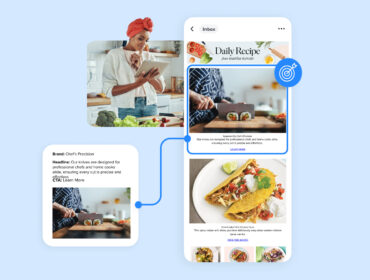How eCommerce brands can leverage email for third-party monetization
As more ecommerce companies invest in monetizing their emails with third-party advertisements, they’re going to have some questions: How can I maintain brand safety? How should I segment audiences? Is it risky to ask readers to click away from my content? If email is one of my biggest sales-drivers, will this impact my overall business?
Jon Nolz, global director of ads at Groupon, has answers.
As an online marketplace for businesses to promote their offers, Groupon has driven a lot of success from email outreach. Still, they’ve been careful to take a sophisticated and thoughtful approach to monetization.

“We’re not just throwing an ad on a page and seeing how it works,” Nolz tells us in a recent Real Time Banter webinar. “We’re saying, ‘Hey, our email businesses is massive. It drives a significant amount of revenue for us. We don’t want to impact that. We want to augment and complement that.'”
Let’s look at how Groupon builds and maintains its robust monetization strategy.
Gauge the pulse of the company
Start with the basics and don’t skip ahead. Get a feel for how your company approaches and values different aspects of online marketing before launching a brand-new initiative.
“Determine their understanding of digital advertising – what it means, why it’s included, why it isn’t included,” Nolz says. “Say, ‘What are the reasons behind whether we do this or whether we don’t?’ Figure out the hot-button issues and how you address those. Oftentimes it starts with a conversation and understanding the willingness to participate in this type of arrangement.”
Audit your assets
Take stock of current strategies and resources to see where you can cut the fat, shift assets, and double down on what’s working.
“With a handful of people on my team, we made a very concerted effort to look at all of our different monetization strategies and partners,” Nolz says. “We did an audit of inventory and looked at: What are we doing, why are we doing it, what are the biggest needle movers, and how do we strategically prioritize based on impact?”
“We did an audit of inventory and looked at: What are we doing, why are we doing it, what are the biggest needle movers, and how do we strategically prioritize based on impact?”
Choose strategies that complement your macro business
It’s crucial to select monetization strategies that augment – instead of inhibit – your overall business goals.
“At the end of the day, we’re in the business of selling goods and experiences,” Nolz says. “If monetization impacts that on a macro level, then then we pull back.”
With email in particular, Nolz needed to make sure ads linked readers to brands and services that were relevant to Groupon’s marketplace and consumer interests.
“Email is one of our biggest channels from a scale perspective. We send out millions and millions of emails on a daily basis and it’s how we engage with our customer base and provide them with relevant offers,” Nolz says. “So on top of that, how do we elegantly mix in strategic, relevant, personalized experiences that meet them in email?”
That’s why Groupon conducts tests to determine the impact of monetization channels – not just on revenue, but also conversions and consumer engagement. This helps them narrow their focus and invest in the most promising strategies.
“We’ve had a lot of partners come to us and say, ‘We’re going to run these 10 ideas past you,'” Nolz says. “I’m like, ‘Okay, great, but I can tell you from experience that you can throw a bunch of ideas at us or we can be very pragmatic and prescriptive and look at the needle movers. Let’s rank them in priority. And then let’s constantly evaluate that priority list.'”
Sell higher-ups with data
Running tests also provides Nolz with the data he needs to gain buy-in for monetization strategies.
“We had to sell this in,” he says. “We had to bring the data; we had to bring the story. We had to say, ‘What are the different levers that are driving this?'”
For example, Nolz was able to show that even after customers linked out to advertising brands like Allbirds and Bombas, who aren’t on the Groupon site, they still came back to Groupon for further engagement.
“We can track them and determine what they’re doing,” he says. “We can make sure we’re not ultimately impacting the macro business. We’ve found that through arduous amounts of data.”
“We can make sure we’re not ultimately impacting the macro business. We’ve found that through arduous amounts of data.”
Segment audiences for personalization
Nolz is constantly refining Groupon’s audience segments to deliver relevant consumer experiences. Ads might not be delivered to high-value segments of loyal users, for instance.
Groupon also uses LiveIntent’s LiveConnect tag on its sites to gather data and see which brands consumers are interacting with. This way, they can launch deliberate, targeted campaigns instead of using a wasteful pray-and-spray strategy.
As Nolz says, “Instead of making a buck now, we want to make $10 down the road. So we focus on that longterm value and that user experience.”
Update blocklists
Even after you launch a monetization strategy, it’s important to update blocklists to deliver the most brand-safe and engaging experiences. This could involve blocking certain audience segments from seeing ads or blocking certain advertisers from buying space in a specific email content category.
“We have a pretty extensive blocklist, and we share that with the LiveIntent team,” Nolz says. “On a weekly basis, we’re saying, ‘Hey, this is an advertiser that’s interested in buying on Groupon. Are you okay with it?’ It’s not always ‘yes.’ It’s about how it complements the Groupon strategy.”


